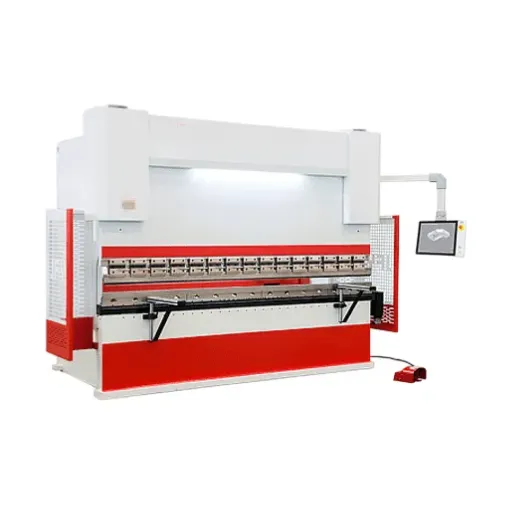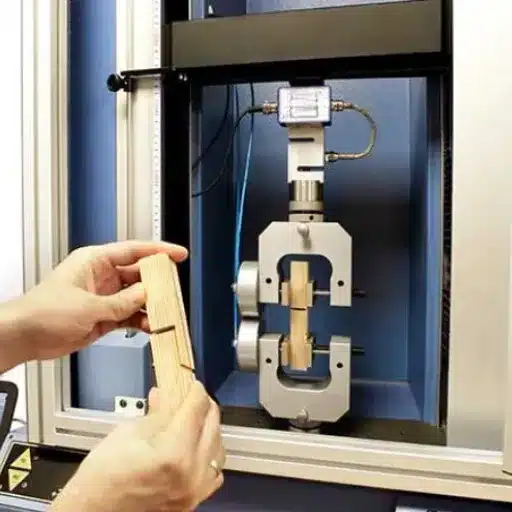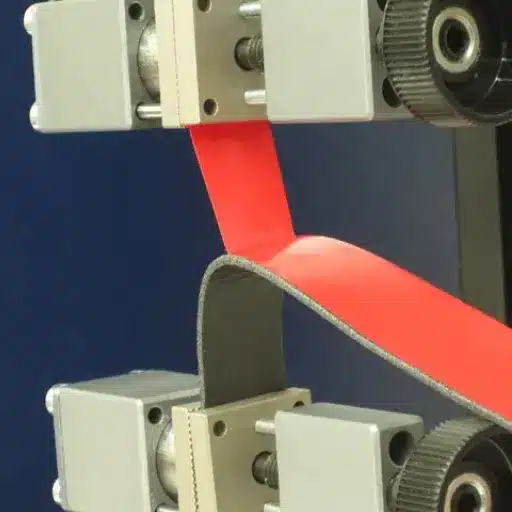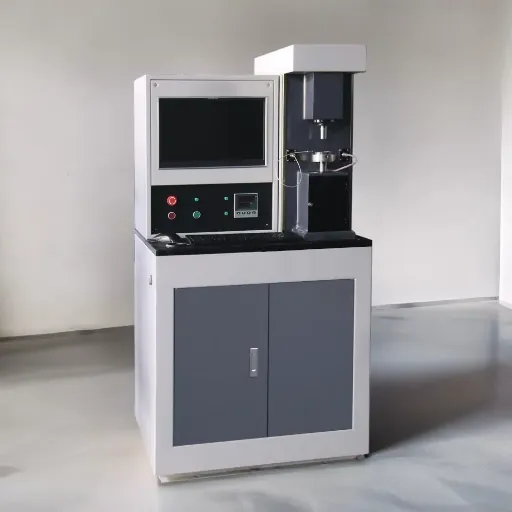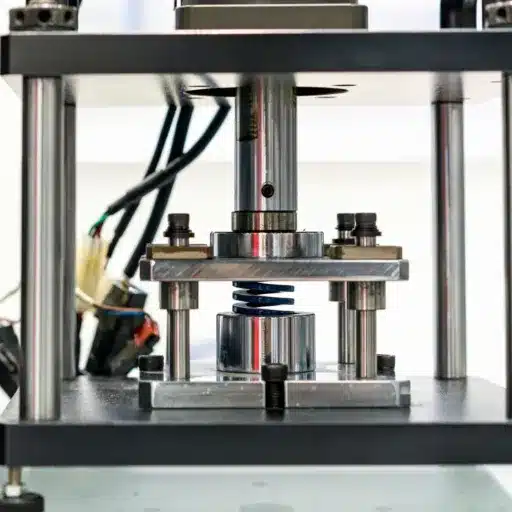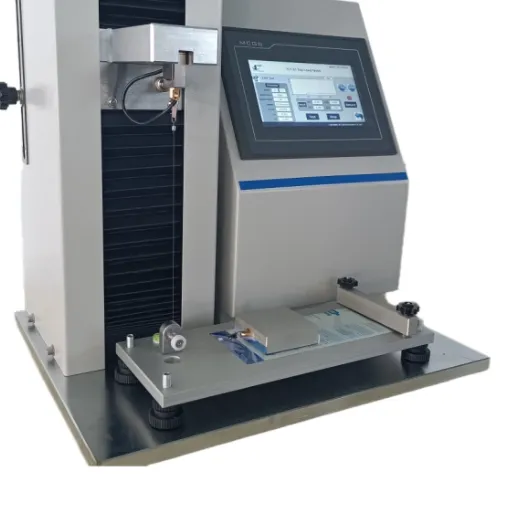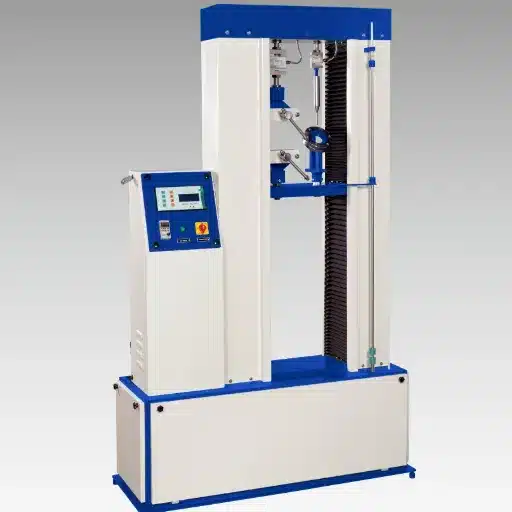Working a sheet metal bending machine takes a good amount of skill, hard work and attention to safety measures to avoid accidents. These machines are indispensable in a myriad of businesses, allowing custom quality and fast fabrication of sheet metal components. Nonetheless, there are various risks that come with their handling in the absence of proper measures to avoid them. This article is intended to help any personnel that has to operate a sheet metal bending machine and is meant as a discovery for both new and repeat operators to guarantee that the environment is safe to operate in while maintaining their machine’s performance. Find out how you can reduce and, to a larger extent, eliminate such threats while at the same time keeping you and your team safe and making a refined workspace more conducive to productivity.
Understanding the Bending Machine
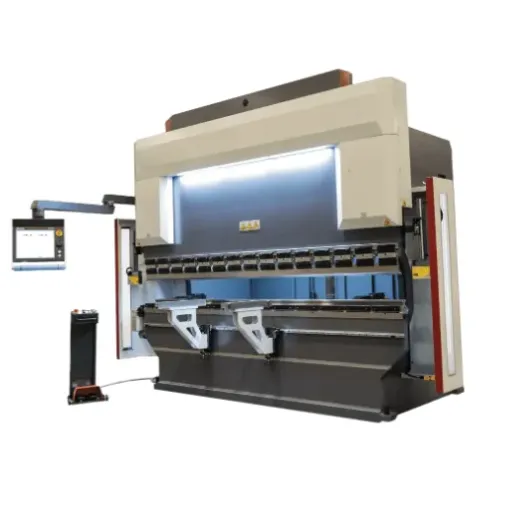
Types of Bending Machines
Very specific machines are required for different needs and applications such as the sheet metal bending machine. The most common ones used are press brakes, roll benders, and panel benders. No doubt, these machines are built with the advanced technology for automatic, accurate, and efficient sheet bending processes. For the best sheet bender to be used, there is a unique offering and capability of one of these machines.
Press Brakes
When it comes to bending metal, press brakes are definitely one of the most efficient. They are able to deliver the desired shapes and angles by pressing the sheet metal between a die and a punch. Not only is it capable of making a whole host of bends in all kinds of metals, it is able to manage anything from simple right angles to very complex, multi-step shapes. Any kind of project, simple or intricate, is able to be done thanks to press brakes coming in manual, hydraulic, and cnc configurations.
Panel Benders
Panel benders work for industries requiring enclosures and panel manufacture where, and they are essential to offer repetition and consistent results. Panel benders offer high precision needed to bend metal at various levels, along with the right manufacturing tools to ensure that technology marches on.
Roll Benders
However, the working of metal with a cylindrical shape is achieved using roll benders, which are some of the best metal fabrication machines in service. They are able to work on metal components that need to be worked on in a tube-like plastic fashion. Knowledge of the technology behind these metal fabrication machines enables the operator to fully exploit the benefits of the machine in question.
How a Sheet Metal Bending Machine Works
A sheet metal brake press alters a material’s shape without breaking it by using force. The mechanism that forces the material makes it difficult to create any kind of angle or bend. This mechanism generally consists of both a punch and a die, as well as a chamber into which the sheet metal is placed – the punch fits into the chamber. This operation precision is very good and there is no material defect at the end of the material.
In order to accommodate the force necessary for bending, the mechanism is driven power after all by a certain system, be it hydraulic, pneumatic, or gear, for instance. Modern sheet metal benders are generally made with internal hydraulic systems due to the stability and the general ability to control the force, which limits the arm to the strength of the material and the material thickness.
The work of bend angle correction to material thickness specification and control is adjusted to the human. In terms of machine controlled systems, equipment like a new sheet metal bending machine comes with a CNC controller offer additional mechanical control. Modern machines can be adjusted to suit mandated industry-specific needs. And because of these changes, these equipment pieces have received a variety of upgrades.
Common Applications of Metal Bending Machines
Bending metals is an important activity in numerous sectors, since it requires precise shaping and forming of metal. The automotive industry readily utilizes these machines for producing motor vehicles, where stringent standards apply during component production, e.g. frames, brackets, and auto bodies. The parts have to be carefully crafted to the desired sizes and standards, which requires ease in shaping metals.
Metal bending machines’ notable use is in the construction industry, and especially in the production of beams, rebars, columns, and frameworks. Their reliance in the industrial world allows for designing of metal products to serve in the architectural industry, hence supporting the creation of smaller and global architectural projects while preserving building and infrastructure integrity.
Apart from the construction industry, refrigeration and consumer appliance as well as furniture and electronic casings are built by metal bending machine. Appliances need to be made to exact shapes or in a form that performs two distinct tasks at the same time. There is a high demand of metalwork of these machines in the market, so they are highly efficient and advanced.
Safety Precautions When Using a Bending Machine
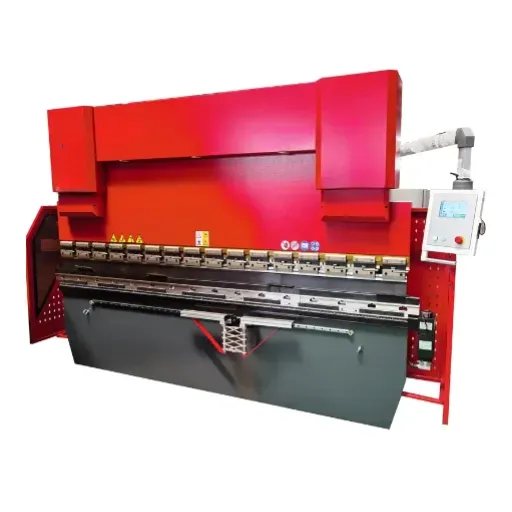
Essential Safety Tips for Using Sheet Metal Bending Machines
- Safety Goggle and Gloves Are a Must, and So Are Gumboots: Always have on the safety equipment needed, including some steel-toed boots, because a pair of nitrile gloves and safety eyewear. Tight-fitting clothing should be worn to prevent any risk of getting caught in the machine. Proper gear is what prevents injuries such as from sharp objects or flying garbage.
- Make Sure to Check the Machine Before Using It: always give the bending machine attention when inspecting it. Before starting a shift, examine it for missing bolts, parts that need replacing or are not in good shape, check for any irregularities. A thorough inspection reduces the risk of mechanical issues arising since there would be maintenance checks in place as well regular pre-shifting checks.
- Adhere to Correct Standard Operating Procedures: Ensure you have a full understanding of the machine by comprehending the operating book and as one would have expected the instructions noted. This includes adjustment of angles and fixing of the material, to and staying away from moving machines. Accidents are very common and range from falling and being hit to the machine’s hand injury as a result of the wrap.
Protective Equipment Requirements
Being safe is about being well prepared. Always have a set of basic safety equipment for you and those around you. For instance, safety gloves, that protect your hands from cuts, scrapes and injuries from moving parts. Apart from safety gloves, you need safety goggles for protecting your eyes from flying debris, especially during cutting activities.
Hearing Protection
Earplugs or earmuffs from noisy environments where machine noise is harmful
Steel-Toe Boots
Recommended to resist foot injuries from falling objects and impacts
Bright Clothing
Helps others clearly see the operator, lowering accident likelihood
Hard Hat
Required in case of electrocution chances and overhead hazards
It is worthwhile to wear bright-colored clothing, which helps others to clearly see the operator, lowering the likelihood of being hurt due to unintentional eventuality and modest accidents. To ensure maximum safety, all the safety equipment must be properly worn and in good working condition, meaning that regular life cycle inspections should be done to all the safety equipment to increase its life cycle. Proper workplace safety procedures should be followed according to the equipment being used.
Understanding Safety Standards for Bending Machines
The secure functioning of any machine is dependent on both its operation and protective equipment. Operator safeguarding and operational safety prevent undesired situations and increase overall productivity. These guidelines apply to the structuring, maintenance, and operation of a machine. It is imperative that all the norms and standards are followed according to the frameworks such as OSHA and ISO. Such measures need to be updated so the overall safety of all factory processes are appropriately aligned.
An essential part of standards is ensuring safety whilst operating. When it comes to bending machines, operators should be protected by covering all the dangerous areas and moving parts. Protection devices that cover punch points and moving parts should be in place and their effectiveness should be checked in regular intervals to ensure that they work in case of emergency. There should also be emergency stop switches that are in place at various points and in new unforeseen situations.
Another important part of manufacture is training the operator. The operator should be trained in all weaknesses of the machine, all best practices and all the specific processes. This training is very important as the operators must also ensure to continue maintaining the efficiency of the technology. Having the best protective wear, such as gloves and safety goggles, helps in keeping the machine as a whole and its features safe. Because of these safety measures, companies are able to maintain the platform and its safer operation.
Best Practices for Efficient and Safe Operations
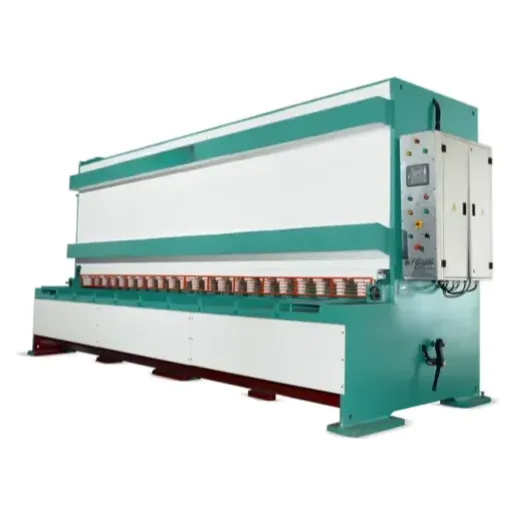
Proper Techniques for Using a Bending Machine
To function the bend machine properly and without causing accidents, there are some approach strategies that one requires to follow.
Step-by-Step Operating Procedure:
- First of all, the set up of the bending machine must be in place before using it. This involves having the materials in such a way that they are aligned properly to the bending tools and also securing them accordingly needed
- For the second step, adhere to the manufacturing speeds and pressure thresholds specified to the particular machine in operation. To the limiting extent, much can be a damage to both the mechanism and the materials with precision control. In addition to the bending of materials, to one’s separate tooling or other appropriately applied equipment to the tooling and officer, in such a manner at an operation, there should be a balancing of the designing considerations.
- Additionally, for the loaded materials, work to the selected edge more in a sequence. Similarly, use graduated loading to avoid rapid loading, which can lead to bending. Fix the tube to the loading device carefully. If the required bending centres must be marked with the same radius of curvature without any radius variation and are not to be subjected to global bending for their design, the importance of making other corrections cannot be overstated. Between the required centres, plastic and elastic deformation are used to work the tube gradually as a reinforcement.
- Lastly, safety during the entire process must come first. The use of specialised machines, for example machines used in the welding industry, can also be used in the bending industry. Grinding machines are different types of power tools that should not be used in the bending industry. A process can be used to perform different types of safety measures and ensure cleaning and mounting is done efficiently. Ultimate quality is possible safely depending on the region where the machine is being used. By following stipulated measures, the operator will stand beneficial in every aspect. All the processes need to be made in accordance with the operator’s manual. This step needs to be ascertained all the time, regardless of the machine in use.
Regular Maintenance and Inspection Guidelines
Whether a machine is powered by electricity, fuel, or any other energy, it is necessary to regularly inspect and maintain the machine in order to avoid areas that can be classified as wear and tear in the future. Beginning maintenance, the machine should be checked timely in order to avoid more serious maintenance concerns such as damage and costly repairs. Bells that have already started ringing, with the warning of major damage ahead, include worn and frayed belts, worn-out or broken leaks, loose bolts, and blocks. Inspection on a daily basis of the entire machine should also include its vents to examine them to ensure the of any dirt, blockages, and debris that may clog up the filters.
| Maintenance Task | Frequency | Key Points |
|---|---|---|
| Daily Inspection | Daily | Check for worn belts, leaks, loose bolts, and vent blockages |
| Re-oiling Moving Parts | As per manual | Lubricate bearings and moving components |
| Filter Replacement | Scheduled | Replace filters to maintain proper airflow |
| Electrical Connections | Periodic | Test connections and apply grease where needed |
In the next step, complying by the maintenance schedule illustrated in the machine operator’s manual is necessary. Bulletins like these are common in machinery and are adopted all over the world and can include tasks such as general checking, re-oiling of moving parts and connecting bearings, replacement of sheets of filters, testing of electrical connections and greasing with grease samples. All the mentioned tasks and works should be conducted on the machine to ensure smooth and proper connection and moving of its parts and to reduce the rates of the unexpected shutdowns and breakdowns without any sign of failure. And in working with connections, make sure that the connections with grease restoration are done with the proper tools and/or materials.
Critical Safety Note:
And last, the block of checking is the worksite check on the machine to be on a shutdown state and completely out of pressurised state to proceed works with maintenance and inspections. Inspection of a machine that is active increases the risk along with the chances of failure and error. The machine and small parts secured a space to work with must have a system of both safe and clean inspection and ambience. Through establishments, and actions, like the checks and maintenance of the machine, the machine will be on duty for the expected period of time.
Identifying and Mitigating Common Hazards
To maintain efficiency and safety while operating machinery, it is important to proactively recognize and address potential dangers. The most common hazards involve mechanized equipment that is not maintained or is operated using the wrong methods. To address this issue, regular equipment inspections and replacing any equipment that is damaged greatly improves the equipment’s operational efficiency. To proactively resolve such issues, schedules for equipment repairs and replacement should also be established to avoid any costly issues or incidents.
Equipment Hazards
Misuse of mechanized equipment or not following proper methods while using equipment. Untrained personnel operating equipment exposes themselves and others to great danger.
Environmental Hazards
Poor lighting, clutter, or lack of proper ventilation contribute to dangerous situations. Proper workspace arrangement is essential.
Prevention Measures
Comprehensive training programs, proper adherence to security processes, and improved airflow and lighting reduce accident risks significantly.
When working with mechanized equipment, along with the aforementioned factors, environmental conditions and the workspace must also be taken into account. Poor lighting, clutter, or the lack of proper ventilation also contribute to dangerous situations. When working with machinery, the workspace must be properly arranged to reduce the clutter and provide proper ventilation to reduce the risk of accidents. By dealing with the aforementioned factors and requiring glassboards and increased airflow, the workplace is also improved in terms of safety. With an overall improvement on the described issues, the risk of accidents and inefficiencies is greatly decreased and is handled using the preventative methods put in place.
Training and Education for Operators
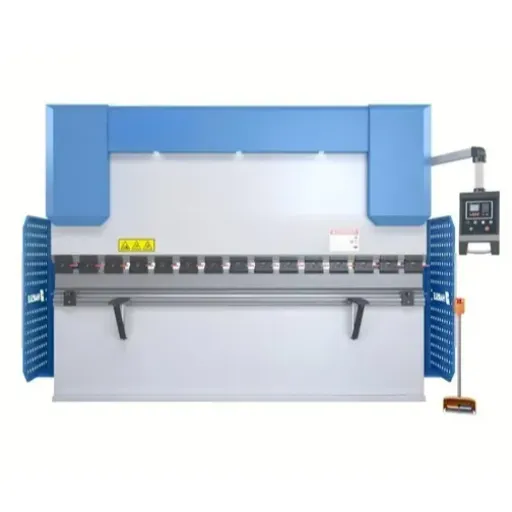
The Importance of Proper Training
Keeping a bending machine, one of the most complicated pieces of equipment in a workshop, running safely requires proper training and education of its operators. These include the basics of running the machine, such as conducting a safety check, positioning of hands and body to avoid accidents, and how to handle the raw materials. Any single safety procedure that is skipped over can lead to catastrophic accidents, which makes training a very important component of a safety program.
Key Training Components:
- Personal protective equipment implications and proper usage
- Emergency response procedures including machine shutdown
- Respect for machines and accountability measures
- Standard safety rules and avoiding shortcuts
Another thing that must be covered in the training is the implications of having personal protective equipment, such as safety gloves and goggles, while working with a bending machine. There should also be an element of emergency response included in the training, such as how to stop the machine in case something goes wrong. Knowing what to do in unexpected situations means the chances of an injury are lower in high-pressure moments.
At a more general level, there is a need to educate the workers on how to respect the machines and ensure they are accountable. Employers should avoid short cuts to the standard safety rules, as this is what most of the training will be about. For instance, to get the machine to do the work, a person with short attention span could get in the way, meaning the attention of the machine operator is divided and results in accidents occurring more often. In extreme cases, this could even lead to injuries or fatalities.
Available Training Resources and Programs
To ensure maintenance workers and operators understand how to operate a machine properly, like the safety training program and resources. A number of companies offer basic level, training for job site safety, equipment safety and the operation of the machinery. On the practical hand, employers are advised to make sure that the employees get the theoritical and practical at the same time. They are also advised to get the certification on the course they have studied. In addition, operators are confidently trained on how the equipment should be safely used. In return, in making the operation of the equipment and machines to be safey, those employers should ensure that the employees should have the access to the programs.
| Training Type | Format | Key Features |
|---|---|---|
| Company Programs | In-person/Hybrid | Job site safety, equipment safety, certification available |
| Online Resources | Digital | OSHA guidelines, safety videos, lockout/tagout procedures |
| OSHA-Approved Training | In-person | Customizable, regular refreshers, comprehensive hazard coverage |
Available Training Resources and Programs
Ongoing evaluation of operator skills demands a coherent and fixed procedure. It commences with a well-defined expectation of professional capacities and abilities exclusive to each role. It is essential to come up with an exhaustive list of elementary abilities tied to each respective operation an operator is supposed to carry out. These are the practical abilities an operator needs to fulfil their responsibilities, like for example, observing safety rules or making decisions under higher importance and tight deadlines.
Tests should be both practical and theoretical to ascertain ability. Short written tests may prove useful in grasping such formal elements in addition to the procedures. However, safety rules can be better examined through short simulations or job redundancy checklists where one works alongside other operators. At this stage, it is also important to consider the level of effectiveness of the protocols. Regular training sessions for the various aspects should also be conducted for improvement and addressing any residual gaps.
Conducted at regular intervals, in addition to follow up screenings and trainings, competency checks happen. Failure for an operator to pass during the follow up training should trigger an alarm as it could be a sign of widespread maladjustment in the process streams and the standardization of the infrastructure. The operator becomes more reliable with each new set of standards issued, hence the importance of the modern comprehension cycle in upward training.
Emergency Procedures and Pesponse
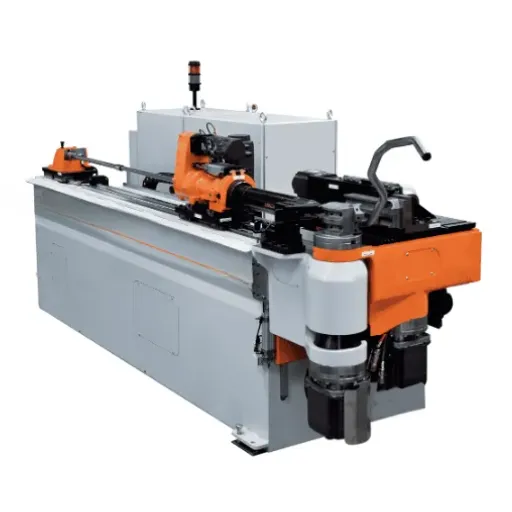
Steps to Take in Case of Emergencies
- Stop the Machine Immediately:If there is an emergency in the middle of pressing operations, just the first and foremost thing to do is to somehow stop the machine. Pressing the emergency stop will suffice much of the time; it is placed just within arm’s reach of the operator. This action ensures that there is immediate stoppage of operation by the press brake to avert any further injury or damage.
- Assess the Situation:Once the machine has come to a complete stop, check the scene to determine what kind of emergency it is. Check to see if anyone has sustained injuries and ascertain that the area is safe and clear from further hazards that might arise from moving parts, electrical issues, etc. Do not attempt to address the problem by yourself if it involves immediate dangers that are beyond your control.
- Seek Assistance and Follow Protocols:Depending on the incident, inquire from the appropriate person if the incident needs to be reported. If there is a casualty, call medical emergency services immediately and render first aid provided it is safe and you are trained to do so. Any kind of equipment malfunctioning or accident should be dealt with according to the standard safety procedures, which necessitate placing the press brake in a lockout/tagout state and documenting the incident for investigation at a later time.
By following these steps, one can decide on the course of action during an emergency on a press brake, thus ensuring the safety for all personnel and minimizing damage to the machinery. Regular safety training and familiarizing oneself with the emergency procedures will enhance one’s capacity to act swiftly during such situations.
Addressing Malfunctions and Safety Incidents
When a malfunction occurs in a bending machine, it is immediately shut down first to avoid any further damage or risk to personnel. Locking and tagging the machine would prevent it from being turned on inadvertently by anyone during inspection or repairs. This was done not just to safeguard the operator but also to provide a safe working environment for the diagnostics to take place.
Detailed inspection of the machine is needed to expose the fault causing the malfunction. For many cases, bending machines suffer malfunctions due to hydraulic leaks, misaligned parts, or electrical faults. Periodic maintenance and visual inspections detect signs of wear, like seal damages and strange noises from possible failure. The machine manual or technical guide is definitely helpful in troubleshooting these problems.
If the problem cannot be resolved in the workshop, it is then very important that one calls in professional companies or well-trained technicians that have specialized knowledge of working with bending machines to attend the problem. They should document the occurrence and the corrective actions taken for future reference, which should prevent the liquidation from ever happening again. Finally, training of all personnel concerning proper operating procedures and emergency responses further diminishes the likelihood of malfunctions and provides for a safer environment.
Reporting and Documentation Procedures
When addressing malfunctions or issues with bending machines, accurate reporting and thorough documentation are essential. All occurrences should be logged in detail, including the date, time, specific issue, and any actions taken to address the problem. This helps identify patterns or recurring problems and ensures a clear record of equipment performance over time.
Operators and technicians should maintain consistent communication when issues arise, submitting their reports to a centralized system or supervisor for review. Providing photos or video evidence of the malfunction, when possible, can also enhance the clarity and reliability of reports. These materials should be archived systematically for easy retrieval and reference in the future.
Documentation not only informs preventative measures but also supports compliance with safety and operational standards. Regular reviews of these records can help identify areas for improvement, reduce downtime, and minimize risks. Proper documentation procedures contribute to a culture of accountability and safety in any workplace utilizing bending machines.
Frequently Asked Questions (FAQ)
Q: Are there any important safety aspects that I need to understand about a bending machine?
A: When using a bending machine, putting on safety gear such as safety glasses and gloves is very important. Additionally, one should make effort to understand how to maintain the machine’s safety features. Always ensure that the work area is clear and the sheet is accurately positioned to prevent serious accidents.
Q: What are the steps for the bending equipment activation?
A: Switch the machine on to allow it to warm up for a few minutes. This helps to safely operate the bending equipment and reduces the possibility of malfunctioning due to a lack of attention.
Q: Can accidents be reduced by ensuring alone is when a bending machine is used?
A: The common advice is to never be alone, especially because your safety is the major concern. Involving at least another person when bending should mitigate the risks that come with equipment failure, since bending activities can be easily monitored. sidl is still with every other thing.)
Q: How should I handle the stop that occurs unexpectedly?
A: Once stoppage triggers, it is advisable to instigate stoppage tests and stop any further processing. After ensuring the machine is off (make it idle for a few minutes), use the time to address any issues that might be there.
Q: Are there any suggestions on what I can do when dealing with metal sheets soaked in water?
A: Quite unlike dry metal sheets, sped-up bending dramatically increases the likelihood of slipping which can be quite dangerous. Pre-bending preparations should include the wiping off of excess water.
Q: Are there bending machine safety features that one can explore?
A: Consider bending machines that have features like emergency stop buttons, protective covers, as well as the automatic shutdown functionalities. They are all well designed to not only manage risk but also to offer better protection to the operator.
Q: Is there a reason why I am asked to read the instruction manual before I use the bending machine?
A: Reading the instruction leaflet will be helpful in understanding the device’s features and the included safety modes. It provides good coverage on important safety warnings, prevention of accidents, and correct operational modes.
Q: What practical measures can I take to ensure effective control of personal safety during operation?
A: Personal safety is enhanced by auditing the bending equipment in operation, having an untidy work space, and ensuring each operator knows how to properly employ the equipment. Healthy competition is always encouraged in respect of safety.
Q: What is the best practice concerning waste metal produced from the bending operation?
A: Waste metal should be correctly disposed of immediately after the bending process so as to keep the work environment clean and safe; waste management complements the manufacturing and ensures that bending equipment is not a source of additional hazards.
Q: Is there a danger presented by the metal sheet not being placed on the bender correctly?
A: Severe danger can be posed by the sheet being placed wrong even during operation processes. It mostly relates to the misuse or inaccurate bending already. Handling the sheet is best determined to be along the length of the bender and perfectly parallel for secure operations.
References
-
Safety Tips & Precautions for Using Sheet Metal Bending Machines – Covers essential safety measures like proper sheet handling and preparation.
-
5 Metal Bending Safety Precautions You Need to Know – Highlights key precautions, including wearing protective equipment and maintaining a clean workspace.
-
Safety Rules to Follow When Using a Bending Machine – Emphasizes the importance of wearing complete Personal Protective Equipment (PPE).
-
A Guide to Bending Safety – Provides insights into safe tool-changing and alignment practices.

